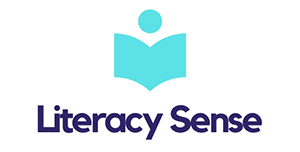Spontaneity While Reading, Equals Comprehension
Blog 10 By Wendy Barr (4 min read 597 words)

As a child, my reading experiences were far from the joy expressed in this image.
My early memories of reading lessons hover around flashcards and ‘sounding-out’ and ‘round-robin-reading’ by turn, in a class of children, who were unaware of the term ‘tolerance.’
I still have flashbacks to my inadequacies.
The blackboard lessons in letters and words were easy enough, in isolation. But seeing quantities of words thrown together on the pages of a book would send me into a flat panic.
Because that is all they were to me.
Words on a page – that had to be ‘worked through’ in isolation.
Nothing spontaneous.
No comprehension.
Zero love of books.
Reading is actually less about knowing the words, and more about relating to the story. Bringing to it, your own experiences and language connections.
Of course, you need to have some basic sound-to-letter knowledge and a familiarity with the commonly used words in our language.
And this is where parents and early childhood educators become the ‘front-line’ enablers.
Engaging your new baby and toddler in talking is the very best start for literacy success.
So often, a young mum can be seen chatting merrily away on their phone, whilst pushing a stroller with the baby facing away. Such a waste of potential interaction.
Everything the child looks at, should excite wonder, and as such, present the opportunity for conversation, language building and extending their bank of experiences.
Similarly, when reading a book to little ones, it should be a shared experience, with lots of talk and facial expressions that delight and invite the child ‘into the story.’
Recently, I bought some simple board-books from K-Mart, as part of a Baby-Shower present for a new Mum-to-be. One book featured some well-known nursery rhymes; another had areas on the page that young fingers could touch; and the last had brightly coloured buttons that mimicked the sounds of animals pictured on the page. All had ‘lift-the-flap’ additions on each page, to draw the child’s eye and encourage further exploration.
A hovering toddler was intrigued with the books and I took the opportunity to show the new Mum, how to engage a baby while reading. The key is in demonstrating your own ‘thrill’ for the content and the interactive pages, and exaggerating your wonder about and love of the story.
Parents also have the opportunity to ignite the child’s love of words through Phonological Awareness activities, like singing songs or reciting popular nursery rhymes, as well as reading books that have rhyming lines or making a rhyme about everyday routines.
It is important to include activities of this sort into every aspect of their day. It can be challenging, but so engaging to the young, and the value-add to their literacy learning is significant.
Our language is steeped with an amazing array of pattern and rhyme and these are the building blocks for sharing the joy of reading.
Pattern and rhyme dance into the mind and memory, settling there like the embers in yesterday’s fireplace. They sparkle idly, but are always alert for the sound of a familiar rhyme or to recognise letters that work together, that will ignite a useful call to action, while reading, as the child grows.
This is the spontaneity, I’m referring to while reading: the capacity for fast recall of pattern and rhyme, making connections that will prompt a useful strategy and result in the uninterrupted comprehension of the author’s message.
Want more?
Go to literacysense.com to secure your copies of ‘Reading Sense’ and the ‘So Puggy’ series of books.
